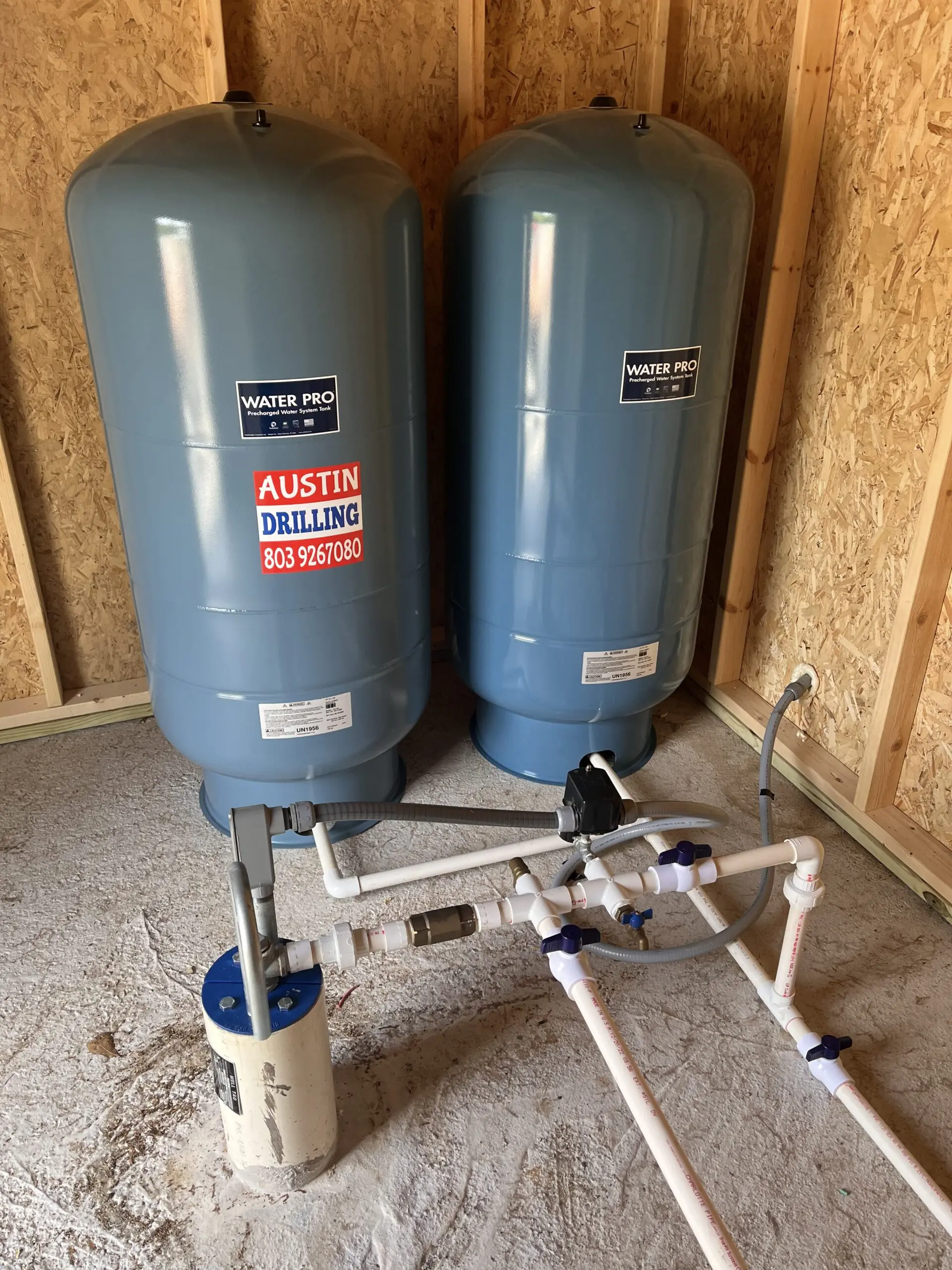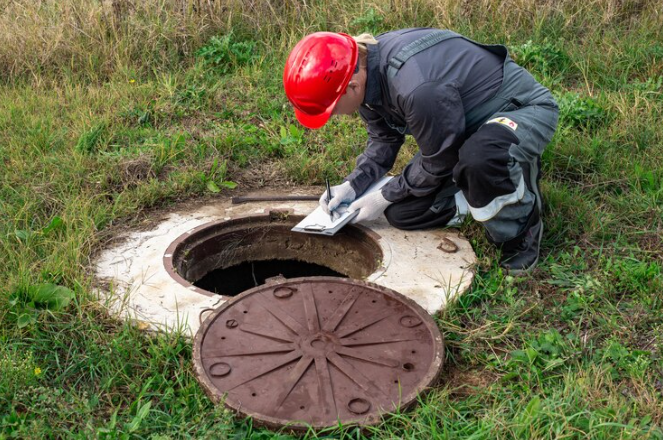
Granular activated carbon, often referred to as GAC, is a highly effective adsorbent that is widely used in various industries and applications. It is a form of carbon that has been processed to have a large surface area, which makes it highly porous and capable of trapping and removing impurities from air, water, and other substances.
To improve filtration, Granular Activated Carbon, for instance, can be combined with another medium, like sand or anthracite. Combining GAC with other filtration methods can be highly effective, as it can remove more contaminants from the water supply without increasing maintenance expenses.
Combining Granular Activated Carbon with either a UV or reverse osmosis system is another option for achieving even higher levels of water purity. This method assures that the water is pure and safe to drink before entering the distribution system.
How Does it Work?
At its core, GAC is a form of carbon that has been processed to increase its surface area. This increased surface area allows it to adsorb (yes, with a “d”) various impurities and contaminants from gasses or liquids that come into contact with it.
Now, you might be wondering what “adsorption” means. Well, it’s not the same as absorption. When something is absorbed, it is taken in and dissolved within a liquid or solid. On the other hand, when something is adsorbed, it sticks to the surface of another material without being dissolved. Think of it as Velcro for molecules!
The unique structure of GAC provides countless tiny pores and crevices on its surface, creating an enormous amount of available space for impurities to cling onto. These pores act as little traps for molecules, capturing everything from organic compounds and chlorine byproducts to heavy metals and even some volatile organic compounds (VOCs).
The adsorption process occurs due to various forces at play, including electrostatic attraction and Van der Waals forces. Essentially, these forces pull the impurities towards the carbon surface and hold them there.
But here’s where things get interesting – GAC isn’t just a one-time-use material. It can be regenerated and reused multiple times before eventually losing its effectiveness. Regeneration typically involves heating the carbon to high temperatures in a controlled environment. This process burns off the adsorbed contaminants, allowing the carbon to be used again and again.
So, whether you’re looking to purify your drinking water, remove odors from the air, or treat industrial wastewater, granular activated carbon is a powerful ally. Its ability to absorb a wide range of impurities makes it an essential tool in many industries.
Benefits
Granular Activated Carbon (GAC) is a highly porous form of carbon commonly used in various applications for its ability to adsorb and remove impurities from air and water. Here are some key benefits of using granular activated carbon:
- Effective Removal of Contaminants
- Improved Water Quality
- Chemical-Free Filtration
- Reduction of Harmful Substances
- Long-Lasting and Cost-Effective
- Versatile Applications
- Odor Control
Granular activated carbon offers numerous benefits in removing contaminants, improving water and air quality, and providing effective and eco-friendly filtration solutions. It’s a great option for a wide range of uses when removing contaminants is a priority due to its adaptability, low price, and lack of chemical additives.
What Does it Remove?
Granular Activated Carbon (GAC) is known for removing a wide range of contaminants from water and air through adsorption. Here are some substances that GAC can effectively remove:
- Organic Compounds
- Chlorine and Chloramines
- Taste and Odor Compounds
- Pharmaceuticals and Personal Care Products
- Industrial Chemicals and Byproducts
- Volatile Organic Compounds (VOCs)
It’s important to note that the effectiveness of GAC in removing specific substances may vary depending on factors such as contact time, concentration levels, pH, and the specific characteristics of the contaminants.
Additionally, GAC has limitations in removing certain substances such as dissolved inorganic compounds, including heavy metals like lead or arsenic, and some microorganisms. For these types of contaminants, other treatment methods may be required, such as reverse osmosis, activated alumina, or specific filtration systems designed for their removal.
Overall, GAC is a versatile and effective medium for the removal of organic compounds, chlorine, chloramines, taste and odor compounds, pharmaceuticals, and various industrial chemicals and byproducts, making it a valuable component of water and air treatment systems.
Advantages & Disadvantages
Advantages of Granular Activated Carbon
- Highly Effective Adsorption: GAC has a large surface area and high porosity, allowing it to adsorb and trap a wide range of contaminants, including organic compounds, VOCs, chlorine, heavy metals, and odors. It effectively removes impurities from water and air, improving their quality.
- Versatile Applications: GAC can be used in various applications, including water treatment, air purification, industrial processes, and wastewater treatment. Its versatility makes it suitable for diverse filtration needs.
- Chemical-Free Filtration: GAC provides a chemical-free method of removing contaminants. It does not introduce additional chemicals to the system, making it a natural and eco-friendly filtration option.
- Long Lifespan and Cost-Effective: With proper maintenance and periodic regeneration, GAC can have a long lifespan, making it a cost-effective choice for filtration systems. It can efficiently absorb contaminants over an extended period before requiring replacement.
- Odor Control: GAC is highly effective in removing unpleasant odors from water and air. It can adsorb volatile compounds responsible for foul smells, controlling odor in various applications.
Disadvantages of Granular Activated Carbon
- Limited Capacity for Inorganic Substances: GAC adsorbs mostly organic and inorganic compounds. It may not remove some inorganic impurities such as heavy metals, nitrates, and fluoride. Removal may require additional therapy.
- Particle Release: In some cases, GAC particles can be released into filtered water or air. This can happen when the carbon bed becomes saturated or during high flow rates. It is important to properly size and maintain the GAC system to minimize particle release.
- Regular Maintenance and Replacement: GAC filtration systems require regular maintenance to ensure optimal performance. This may involve periodic regeneration or replacement of the carbon media, which can add to the operational costs.
- pH Sensitivity: GAC performance can be affected by the filtered water’s pH. Extreme pH levels, either acidic or alkaline, can reduce the adsorption capacity of GAC. Adjustments to pH levels may be necessary for certain applications to optimize their effectiveness.
- Bulky and Space Requirements: GAC filtration systems can be relatively bulky and require significant space compared to other methods. Adequate space must be allocated for the installation and maintenance of GAC filters.
- Flow Rate Limitations: GAC filters may have limitations on flow rates, especially for high-demand applications. Higher flow rates can decrease the contact time between water or air and the carbon media, reducing adsorption efficiency.
Considering these advantages and disadvantages is important when evaluating the suitability of granular activated carbon for specific filtration needs. Understanding the limitations and proper usage can maximize its effectiveness and address potential drawbacks.
At Austin Drilling & Well Repair, we specialize in installing and maintaining GAC filtration systems. Our experienced technicians are well-versed in optimizing performance and ensuring the system operates at its peak efficiency. We provide regularly scheduled maintenance for all our customers to help them get the most out of their GAC filtration systems.
More About Well Water Filtration:
- Carbon Well Water Filtration System
- Ion Exchange Well Water Filtration System
- Reverse Osmosis Well Water Filtration System
- Sediment Well Water Filtration System
- UV Well Water Filtration System
- Water Softeners
Contact us today to learn how we can help you with your GAC filtration needs.
What Does Well Shocking Remove From Your Water?
Well shocking, also known as well disinfection or chlorination,
Water Well Inspection Checklist
Your Comprehensive Water Well Inspection Checklist: Ensuring a Safe



